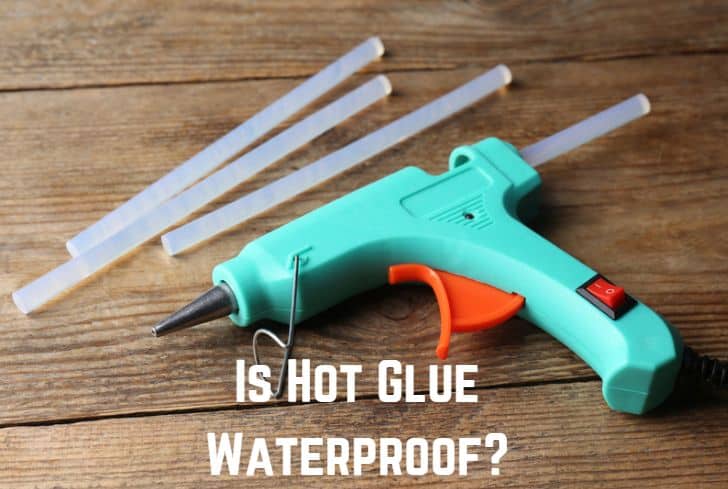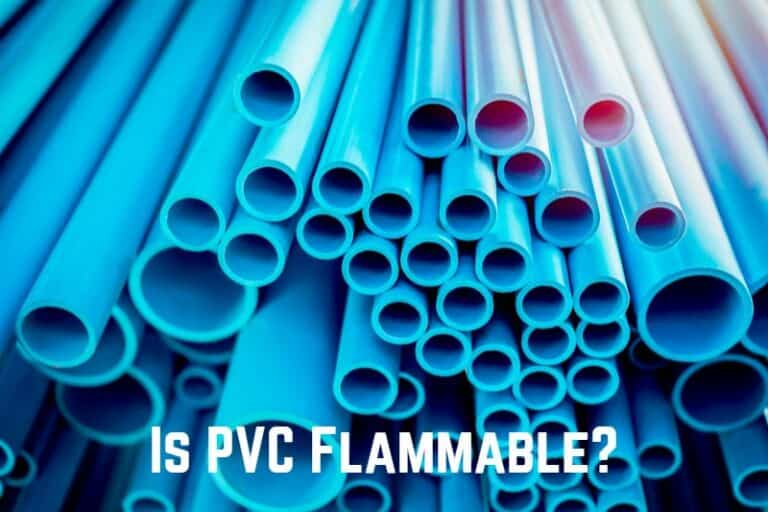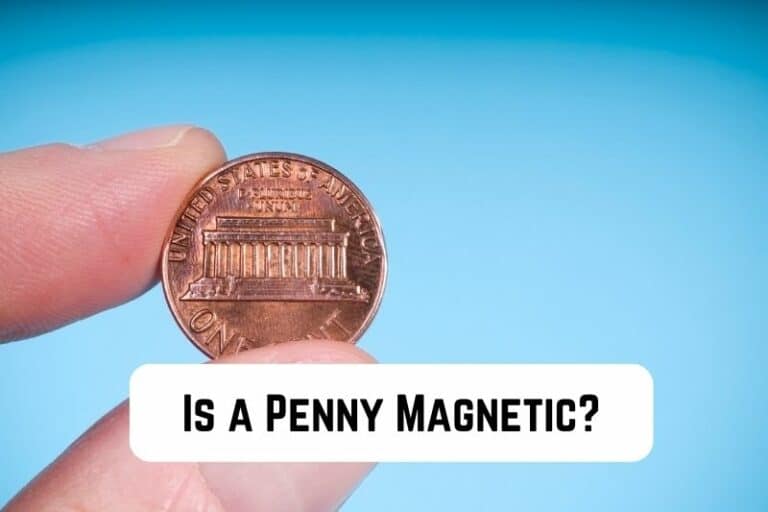Is Hot Glue Waterproof?

One item that is typically present in every home with craft enthusiasts: hot glue. You’ll rarely miss it during Christmas, particularly when children want to make paper ornaments. Hot glue is also a favorite in the leather and car manufacturing industries. But is hot glue waterproof?
That’s a question we shall answer thoroughly in this article. We’ll also discuss whether you can use hot glue outside, how it reacts when wet, and whether it is weatherproof. Most interestingly, we let you know whether hot glue is waterproof on plastics, glass, and fabric.
Read: Is Contact Paper Waterproof?
Is Hot Glue Waterproof?
Hot glue is waterproof. It has thermoplastic properties because it is made of plastic. The glue bond will melt when heated but will solidify after cooling. Because the interlaced polymer is so dense, water molecules cannot flow through it. The glue’s structure contains polymeric strands, impervious to all liquids. No water or solvents are used to form the glue.
The water-resistant capabilities of the glue also depend upon the kind of material. Every material will behave differently with hot glue. Hot glue comes in a solid state, and you must first buy a hot glue gun. You then put the solid hot glue stick in the gun. The glue stick becomes sticky after melting in the gun. You apply the glue to the required area using the glue gun nozzle.
Hot glue is waterproof, but that doesn’t mean you should use it underwater. When heated, hot glue melts but cools down to return to its original solid state. It contracts when exposed to water because of the quick drop in temperature. The hot glue joints will likely develop holes, cracks, and microscopic seams. As the water energy builds up, the hot glue bond eventually cracks.
Here is: How To Use A Hot Glue Gun (Full Tutorial)
What Makes Hot Glue Waterproof?
The component used to produce hot glue is an amorphous polymer, a type of plastic. When polymers are cooled, they form repeated lengthy chains containing a basic polymeric unit. Water molecules cannot travel through the polymeric unit because of its array of twists and turns. All hot glues become waterproof since they all contain polymers.
Several properties make hot glue waterproof, as highlighted below:
- Polyamides are thermoplastic substances that are essential components of hot glue. They work well to seal porous surfaces and are water-resistant. Due to their chemical stability and ability to maintain their shape after application, polyamides make hot glue waterproof.
- Polyethylene possesses exceptional chemical characteristics that keep it stable when heated. It transfers these qualities to the hot glue, such as outstanding waterproof qualities.
- Ethylene Vinyl Acetate(EVA) is a significant glue element in hot glue. Wax and resin are mixed with EVA to treat and waterproof leather. The adhesive is waterproof because of this particular element.
- Amorphous Poly Alpha Olefins (APAO) have a soft texture and can withstand water. Hot glues may take some time to set up, but they are strong, and any surface they are used to bind will remain in place for a very long period.
Is Hot Glue Weather Resistant?
Hot glue is not weather resistant. It is not ideal for either extremely hot or cold environments. When it’s hot outside, hot glue will crack. In colder temperatures, the glue loses its durability. Hot glue expands as the temperature rises, contracts as the temperature drops, and then reforms to establish a weaker adhesive bond again.
The strength of the hot glue often decreases as the temperature rises. Nevertheless, hot glues are available in two different temperature ranges: hot and low. Around 380 °F (195 °C), high-temperature hot glue melts. If the temperature rises above this, the link between the surfaces and the hot glue will break.
Low-temperature hot glue melts at 260 °F (130°C). At higher temperatures than this, the heat will decrease the solidarity of the hot glue. Once the adhesive gives way, the parts bonded by the glue will begin to slide or move. Equipment might not work correctly, or things might fall apart or break.
What Happens to Hot Glue When It Gets Wet?
Hot glue is affected by wetness because of its thermoplastic characteristics. The glue cools and transforms back into its solid state after it is applied to a surface. Water lowers a material’s temperature while also impacting hot glue. After more time in the water, the hot glue shrinks and separates from the materials.
With continued exposure to wetness, the adhesive eventually starts to crack and peel off.
Can You Use Hot Glue Outside?
Hot glue is very good at sticking things together indoors but might be less successful outside. The glue will melt in the sunlight, separating it from the surface it was attached to. Snow will freeze the bond, causing cracks due to contraction. Hot glue loses its ability to stick when it rains.
But if the hot glue is polyethylene-based, you can use it outside. Hot glues made of polyethylene do not break down when exposed to ultraviolet light. Hot glue without polyethylene might not work as well.
Let’s look at an example of when you want to combine two pieces of wood. Wood expands as a result of water seeping into it. Because wood will now expand and contract due to weather changes, hot glue becomes less water and weather resistant.
The kind of surface you’re applying hot glue to will also determine whether you can use it outdoors. Consider the materials, circumstances, and conditions before using hot glue outdoors. The frequent weather variations from the day/night cycle will also impact the glue.
Is Hot Glue Waterproof on Plastic?
Several plastics respond well to hot glue, forming an excellent bond. When water is added, the temperature shift could weaken the adhesive. Most individuals don’t consider that some plastics have a slippery surface while using glue to avoid drilling or nailing. Even though the bond created by hot glue with plastics is weak, adding water weakens it further.
Polyethylene (PE) and polypropylene (PP) are examples of plastics that have a slippery surface.
When used with plastics, hot glue can behave differently. Plastics do not react well with water when combined with other materials like glass or wood. Water will undo the work done by the hot glue. Therefore, it is not recommended to repeatedly or for extended periods expose a plastic object to water that has been hot glued on.
Is Hot Glue Waterproof on Glass?
Glass is an amorphous substance that expands and contracts in response to changes in temperature. Any of those conditions will cause hot glue to separate from the glass. Glass can sustain some temperature changes for a while because it is a poor heat conductor. In particular, if the glass is constantly exposed to extremely high temperatures, that will damage the hot glue bond.
While not all hot glues are waterproof, gorilla hot glue sticks are moisture and waterproof.
You can use hot glue on glass if you’re sure it won’t be exposed to different temperature changes. But never use it if the glass item is exposed to water.
Is Hot Glue Waterproof on Fabric?
The effects of water on the fabric and hot glue are minimal. Hot glue creates a powerful bond with fabrics. However, the quality of the hot glue must also be higher. A solid hot glue bonding surface is offered by both woven (fabric produced from yarn) and non-woven (fabric made from connected fibers).
The fabrics’ woven texture makes it simple for the hot glue to melt in. However, water may readily access the hot glue because it can flow through the fabric. Nevertheless, applying hot glue to the fabric is temporary; it won’t last forever.
Even though hot glue can hold cloth well because of its rough surface, it may make your fabric even rougher. It’s important to note that only some fabric types will work well with hot glue. Nylon and polyester synthetic materials can melt when exposed to hot glue.
FAQs
Which is the best hot glue for waterproof and outdoor use?
Strong structural bonds are formed using polyurethane reactive hot melt glue (PUR), which cures as it reacts with air. The glue quickly creates a bond with epoxy-like strength. The PUR hot glue’s tensile strength for the first two days keeps increasing.
In contrast to regular hot glue, the glue is more UV resistant. You can add weatherproof, dustproof, insulating, and temperature change resistance. PUR, however, comes with specialized PUR hot melt guns and is usually sold in tubes. It is significantly more expensive and has a shorter shelf life.
Does hot glue stick to rubber?
On some kinds of rubber, hot glue adheres effectively. Unfortunately, it might not be practical with plasticizers and rubbers with greater oil content. Rubbers with smooth, slippery surfaces, like silicone rubber, will also not adhere well to hot glue.
Super glue is the ideal adhesive for rubber. Cyanoacrylate serves as the primary adhesive component of this acrylic resin. The cyanoacrylate starts to build up and produce a solid bond in minutes. Cyanoacrylate changes into a plastic state after curing.
Conclusion
Hot glue’s thermoplastic characteristics make it waterproof. At first, the glue is solid; thus, a glue gun is necessary. Water molecules cannot pass through due to the polymer chains’ twists and turns. Even though hot glue is waterproof, it is not weatherproof.
Cold or hot weather conditions negatively impact the hot glue bond. The glue works well on fabrics but is not waterproof when applied to plastics, rubber, or glass.






